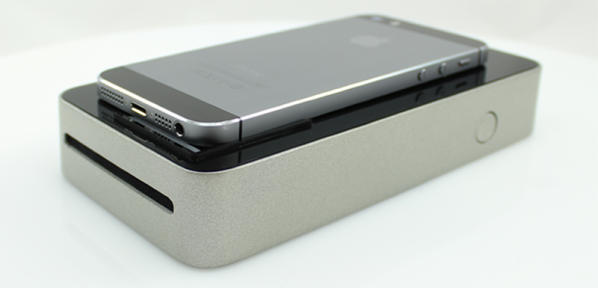Several decades ago, the all the punks and artsy types had terrible lenses with terrible camera that leaked light everywhere. Film was crap, and thus was born the fascinating world of Lomography, with effects and light leaks unique to individual cameras. Now, everyone has a smartphone with high-resolution sensors, great lenses, and Instagram to replicate the warm look of filters, light leaks, and other ‘artististic’ photographic techniques. The new version of this photography is purely in the digital domain, and wouldn’t it be great if there was a way to make your digital selfies analog once again? The SnapJet team has your back.
Instead of adding filters and other digital modifications to smartphone snaps, the SnapJet prints pictures onto Polaroid film. Yes, you can still buy this film, and yes, it’s exactly how you remember it. By putting a smartphone down on the SnapJet, you’ll only need to press a button, wait for the film to be exposed, dispensed, and developed. What comes out of the SnapJet is an analog reproduction of whatever is displayed on your phone’s screen, with all the digital filters you can imagine and the option to modify the photos in the analog domain; eac Polaroid can be turned into a transparency, with backlit LEDs being an obvious application:




 The silk screen of the PCB has dotted lines showing the different angles possible for one pair of motor supports. One set makes a perfect “X” for traditional quadcopter flight. Another reduces the angle between front and back struts for higher-performance quad flight, while the last set is intended for a tricopter setup.
The silk screen of the PCB has dotted lines showing the different angles possible for one pair of motor supports. One set makes a perfect “X” for traditional quadcopter flight. Another reduces the angle between front and back struts for higher-performance quad flight, while the last set is intended for a tricopter setup.













